History
The Department of Surgery traces its origins back to 1914. The Department began as a consolidation of many programs throughout the state. We remain proud of this broad historical background and find it continues to permeate through our program because our medical students, residents and faculty come from a variety of backgrounds to mesh together as one successful unit.
The University of Tennessee Medical School moved to Memphis in 1914 as a result of the union of the University of Nashville, Memphis Hospital Medical College, Memphis College of Physicians and Surgeons and the Lincoln Memorial Medical College of Knoxville. The Memphis City Hospital had been a military hospital during the Civil War and was taken back by the city with special tax support in 1866. The hospital had long supported medical students as the state legislature in Tennessee. The Memphis General Hospital continued to grow: new wings were added in 1911, a children's pavilion built in 1914 and laboratory buildings for the University of Tennessee faculty were built in 1921.

The first chairman of the Department of Surgery after the merger was Eugene Michel Holder, MD. Dr. Holder received his bachelor's degree from A. & M. Starkville, Miss. and his medical degree from Memphis Hospital Medical College in 1894. He became chairman in 1911 of the then Memphis Hospital Medical College. When the consolidation of the medical schools occurred in 1914, he continued as the chairman. He taught anatomy and was a professor of surgery. He specialized in breast, perineal, thyroid and skin tumor surgery. He was a fellow of the American College of Surgeons. He remained chairman until 1927.
Louis Wardlaw Haskell, MD, was named the second chairman beginning in 1927. He received his bachelor's degree in 1899 and his medical degree from Johns Hopkins University. The story of how Dr. Haskell became professor and chairman of the Department of Surgery is best told in Dr. Orren W. Hyman's own words:
"Dr. E. M. Holder had been chief of the Division of Surgery for a number of years. It had been reported to me repeatedly that while he was one of the leading surgeons in the city and one of the most successful, he was also a very clever storyteller and that most of the time when he was supposed to be lecturing to the students on surgery, he was really engaged in telling stories and that these tended to be about the successful operations in his private practice.
In the Spring of 1926, I asked for a conference with Dr. Holder and asked that he resign as chief of the Division of Surgery. He did not protest greatly at this request, but when I suggested that he be made professor emeritus, he became quite incensed. I soon realized, of course, that the title 'emeritus' implied senility and withdrawal from private practice, and promptly withdrew the suggestion. We wound up by publishing a statement that he had asked to be relieved of his administrative responsibilities, but would continue his activities as a member of the faculty. The resignation of Dr. Holder called for the nomination of someone to become chief of the Division of Surgery.
The three most likely men at the time were L. W. Haskell, MD, J. L. McGehee, MD, and R. E. Semmes, MD. I asked these men to meet me at my office one evening, and they did so. When I told them the resignation of Dr. Holder and the necessity of nominating someone to replace him, Dr. Semmes promptly withdrew his name from consideration, stating that he was confining his practice entirely to neurology that he felt a subspecialist could not become chief of the Division of Surgery. Dr. Haskell was a graduate of John Hopkins University and had had a number of years of experience as a teacher in our College of Medicine. Dr. McGehee was a graduate of the Memphis Hospital Medical College, and he, too, had a successful record as a surgeon in Memphis and as a teacher.
It was impossible for me to make a selection between these two men, and they steadfastly refused either to agree upon the one, or one to withdraw. As a consequence, I proposed that I should spin a coin on the glass top desk where we were seated and make the decision on this basis. This was agreed to by all present, and the coin selected Dr. L. W. Haskell, who thereupon became chief of the Division of Surgery."
Under Dr. Haskell's leadership, a contract with the Memphis General Hospital was reached to provide teaching units for the school. He remained chairman until his death, as a result of lung cancer, in 1932.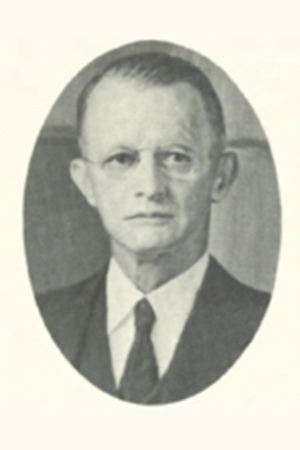
John Lucius McGehee, MD, became the third chairman of the Department of Surgery beginning in 1932. Dr. McGehee was both a skilled surgeon and an outstanding professor. He was widely known as the "Dean of Memphis' Surgeons". Dr. McGehee completed his apprenticeship training at the University of Tennessee Medical School in Memphis. He pioneered the surgical residency at the University of Tennessee, a first of its kind in the Mid-South.
The residents had courses in general surgery, surgical pathology, physiology and internal medicine followed by a minimum of three years of surgical training. He was founder of the American Board of Surgery, vice president of the Southern Surgical Association and a fellow of the American College of Surgeons.
His 'Appendiceal Creed' was famous among the students. He published many articles and was interested in abdominal wall reconstruction using fascia lata. He was both well-liked and well-respected by his students, residents and medical colleagues, who described him as "a gentleman, scholar and judge of good scotch". He continued as chairman and professor until his retirement in 1948. In his last days, he is said to have told his loved ones "you know, it's been a lot of fun".
'Appendiceal Creed' by John Lucius McGehee, MD
1. All deaths from appendicitis are unnecessary.
2. Patients dying do not die from appendicitis per se or from the operation, but die from the complications of appendicitis.
3. In every case of appendicitis, there is a time (the opportune time) during the course of the disease when the removal of the appendix would have resulted in recovery instead of death.
4. This opportune time precedes the development of complications, i.e., the cause of death!
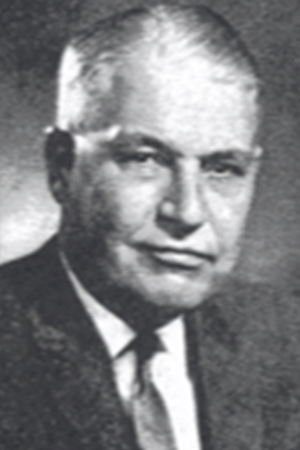
Harwell Wilson, AB, MD, FACS, was born in Lincoln, Ala. on May 23, 1908. His grandfather,
J. Tinsley Harrison, MD, a rural general practitioner, influenced him greatly in his
decision to enter medicine.
Dr. Wilson received his bachelor's degree in 1928 and his medical degree in 1934 from
Vanderbilt University. He studied under Barney Brooks, MD, and worked with Alfred
Blalock, MD, in the early study of shock. Dallas B. Phemister, MD, asked Dr. Wilson
to be a surgical resident at the newly created Department of Surgery at the University
of Chicago.
Dr. Wilson studied for seven years, one of which was spent in research and surgical pathology. He was chief resident and instructor of surgery at the University of Chicago, 1938-1939. He joined the faculty of the UT Department of Surgery in 1939. With the onset of World War II, Dr. Wilson joined the Vanderbilt Unit of the 300th General Hospital. He rose to chief of surgery of the 225th Station Hospital and then he became a surgical consultant to Edward Churchill, MD, in the European Theatre. He served with distinction in the United States Army Medical Corps, received the Legion of Merit, and completed his service at the end of the war with the rank of Lieutenant Colonel.
After the war, Dr. Wilson came to Memphis to establish his private practice. He was soon asked to assume the chair in surgery at the University of Tennessee College of Medicine. He directed the evolution of a one-man volunteer department to a large multi-specialty, modern university department during 1948-1974. He retired in June 1974 and was subsequently promoted to professor emeritus.
Dr. Wilson was deeply dedicated to his profession as professor and chairman. As a distinguished surgeon on the Memphis scene, he was widely respected by his professional peers, and he was deeply admired by his students and residents. He was an outstanding teacher, a good administrator and a master of tact and consideration in dealing with other physicians, families and hospital personnel. He made many contributions to surgery, but the most important was instilling in young surgeons’ warmth, kindness, courtesy and compassion in addition to surgical skills. Many of his junior faculty and residents have gone on to major academic and clinical posts. He was a critical, curious observer and a prolific writer, publishing over 100 national articles and contributed to several surgical textbooks. He was a pioneer in vascular surgery and contributed to the fields of carcinoid and carotid body tumors and colonic volvulus.
He was active in medical organizations, serving as officers in many surgical groups. He was national treasurer of the American College of Surgeons (1962-1967) and president of the Southern Surgical Association (1970), Southeastern Surgical Congress (1961) and Society for Surgery of the Alimentary Tract. He was first vice president of the American Surgical Association when he died. He received many honors, including the distinguished service award from the University of Chicago, Memphis and Shelby County Medical Society, Tennessee Medical Society and the Southeastern Surgical Congress. However, he felt his greatest honor was the establishment of the Harwell Wilson Surgical Society in 1973 by his former residents. Dr. Wilson died at home, as was his wish, on Oct. 10, 1977, after a long, courageous illness.
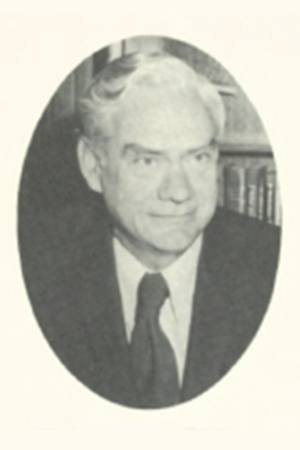
On June 1, 1974, a momentous change, which bodied a dynamic, positive future for the University of Tennessee Department of Surgery, occurred. Following the unanimous recommendation of a search committee composed of faculty members, representatives from the practicing medical community and national leaders in surgery, James W. Pate, MD, was named chairman of the Department of Surgery.
James W. Pate, MD, was born in Wedowee, Ala. on Aug. 28, 1928. He took his premedical education at Emory University in Atlanta and received his medical degree from the Medical College of Georgia in 1950. He entered the U.S. Navy and took his rotating internship at the National Naval Medical Center in Bethesda, Md. from June 1950-July 1951, at which time he began a general surgery residency at the same institution. While serving the first two years of his general surgery residency, he also headed the Division of Experimental Surgery at the National Naval Medical Center from July 1952 through July 1953. While there, he helped to develop the freeze-dried process for preserving arteries to use as grafts and proved the practicality of this process with combat-wounded casualties during the Korean War. He was also the co-discoverer of the bioelectrical causes of blood clots in arteries and veins.
He took two additional years of general surgery residency from 1953-55 at the Medical College of Alabama and completed two further years (1955-57) of residency in thoracic surgery at the Veterans Administration Medical Teaching Group in Memphis. He began his career in Memphis in 1957 as the assistant chief of Thoracic Surgery at the Veterans Hospital. He joined our faculty as an assistant professor of surgery and rapidly rose to become professor of surgery in 1965.
His contributions to literature and his innovative ideas have shaped the way surgeons now perform current operations in cardiovascular surgery. He was a national leader in developing new techniques for open heart surgery, including being the first surgeon in the country to replace a heart valve with an artificial valve in pediatric patients. He was also the first surgeon in the country to replace a heart valve and implant a pacemaker for emergency surgery, following a gunshot wound of the heart.
In 1982, Dr. Pate was honored for outstanding and distinguished public service and received awards from the medical staff at the City of Memphis Hospital for his efforts in training general and thoracic surgical residents, his leadership in establishing surgical intensive care for the region and his development of cardiovascular surgery and training. He has authored over 125 papers for scientific journals, co-authored Science of Surgery and contributed chapters to several surgery textbooks.
During his tenure as chairman, he was able to consolidate two local hospital-based surgical residency programs into the University of Tennessee program. He expanded the number of residents a year from four to eight. He obtained commitment from the University of Tennessee, Memphis, Shelby County and the State of Tennessee to build a trauma center that would be staffed by university surgeons. Dr. Pate, along with Timothy C. Fabian, MD, led the movement to establish a state trauma system. He has been a member of the board of governors of the American College of Surgeons, a member of the Accreditation Committee on Graduate Medical Education, president of the Southern Thoracic Surgical Association, and a founding member of the Society of Thoracic Surgeons. He remained chairman until 1989.
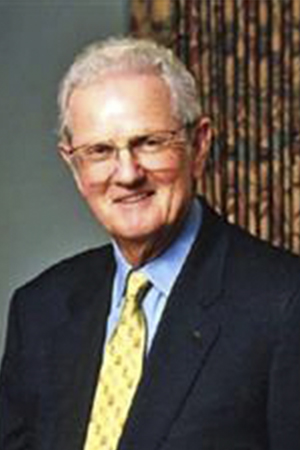
Louis G. Britt, MD, was selected as professor of surgery and chairman in 1989. Dr. Britt was born in Akron, Ohio and his family moved to Memphis in 1937. He completed his medical education and residency at the University of Tennessee Health Science Center under the tutorship of Dr. Harwell Wilson.
Dr. Britt once said of Dr. Harwell Wilson, "he provided me with a residency, gave me my first, best, last and only job in surgery at the University of Tennessee." He joined the Department of Surgery faculty in 1963 as an instructor and by July 1973, he was a professor of surgery.
He performed the first kidney transplant in Memphis in 1970 and was the founder and president of the Mid-South Transplant Foundation, Inc. He was also the driving force behind the University of Tennessee Health Science Center performing liver transplants beginning in 1982. He focused on general surgical issues with contributions in the areas of pancreatitis, abdominal trauma, mesenteric vascular insufficiency and pulmonary embolism.
Dr. Britt had a "strong sense of principle and integrity, his driving leadership and his commitment to excellence in surgery have made him admired and respected by his patients, faculty colleagues and students." In 1982, Dr. Britt was honored for outstanding and distinguished public service and received awards from the medical staff at the City of Memphis Hospital for his efforts in training general surgery residents, his development of renal transplantation in the Mid-South and his work in the field of endocrinological surgery.
He received numerous honors, authored many publications and was a member of many prestigious societies. He served as the president of the Southern Surgical Association in 2002. He was a fellow of the American College of Surgeons, a member of the American Surgical Association, American Medical Association, Southeastern Surgical Congress, Society for Surgery of the Alimentary Tract, Harwell Wilson Surgical Society, International Society of Surgery and the Tennessee Medical Association. Additionally, Dr. Britt served as a major with the Medical Corps in the Army. He remained chairman until 1998.
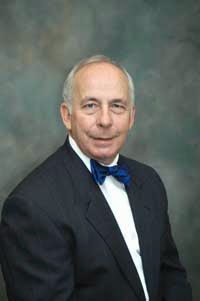
Timothy C. Fabian, MD, was named chairman in 1999. He was born in Marion, Ohio in 1948. He attended college and medical school at Loyola University of Chicago. Following medical school, he completed his surgical residency training at The Ohio State University. He then went to Emory University School of Medicine and completed a fellowship in trauma/critical care at Grady Memorial Hospital. After serving on the faculty at Emory, he moved on to the University of Tennessee Health Science Center.
Dr. Fabian served a role in the development and opening of The Elvis Presley Trauma Center, the only Level I Trauma Center in the Mid-South, in 1983. He was instrumental in merging the University of Tennessee Bowld Hospital with the Methodist Hospital System to form the UT Methodist University Hospital. His academic interests have been in both clinical and laboratory research in dealing with shock and organ injury management.
He is an alumnus of the Harwell Wilson Surgical Society. He has been the president of the Eastern Association of Surgery of Trauma, president of the American Association of Surgery of Trauma, vice chairman of the board of governors of the American College of Surgeons and participates on the editorial boards of multiple surgical journals. He remained chairman until 2015.
